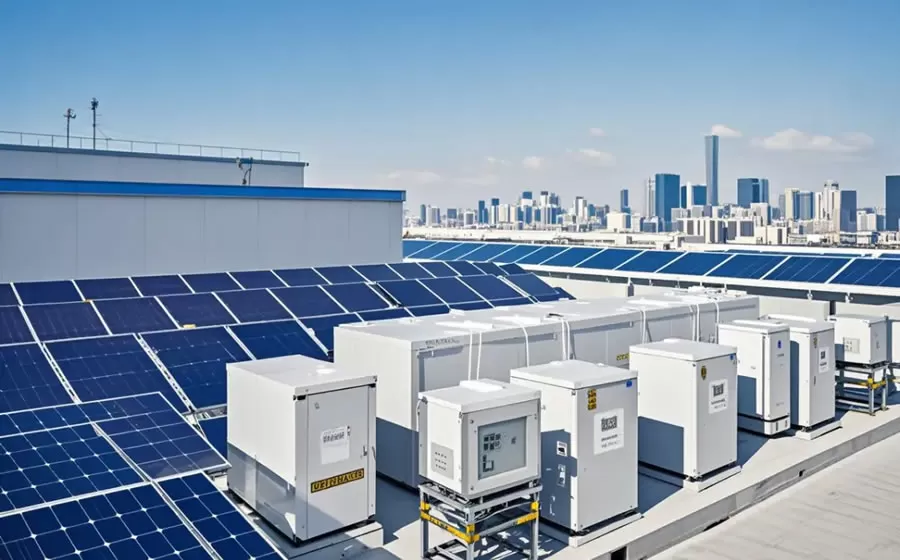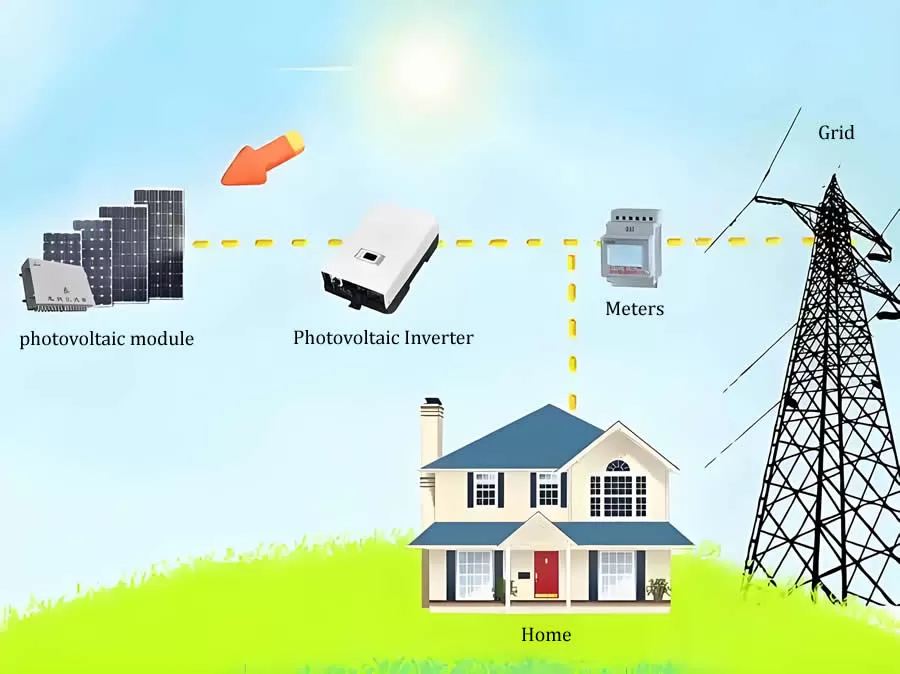
Rooftop solar photovoltaic and energy storage systems
With the increasing global attention to sustainable development and clean energy, the combination of solar photovoltaic (PV) and energy storage systems has become an effective solution to increase energy self-sufficiency. According to the PV industry sector statistics, the global PV installed capacity exceeded 1.2TW, China contributes more than 40% of the production capacity of the moment, a cruel reality emerges: between rain and shine, the traditional PV system energy self-sufficiency rate of only 30% -50%. Germany Fraunhofer Institute data show that rooftop PV users still have 1800 hours per year to rely on the grid power supply, industrial and commercial parks due to the peak and valley price difference leads to 30% loss of power generation revenue.
How to use solar energy and energy storage technology to achieve self-sufficiency has become the key to the energy transition of many homes, businesses and public facilities. So how can solar PV and storage systems work together to increase energy self-sufficiency? Next, let Brice Solar give you a detailed analysis.
1. Advantages of solar photovoltaic energy storage
Solar photovoltaic technology has significant environmental and economic advantages by capturing sunlight and converting it into electricity. According to the International Renewable Energy Agency (IRENA), the global installed capacity of solar photovoltaic has exceeded 1,000GW, and is continuing to grow. Solar energy is a “zero-emission” energy source, and a wide range of energy sources, both urban and remote areas, can be utilized to generate solar photovoltaic power.

Solar PV in the home and the principle of merger and acquisition
The advantages of solar photovoltaic power generation are introduced:
It has the advantage of green environmental protection, does not produce harmful gases and greenhouse gases, and reduces the carbon footprint.
With the advantage of extensive resources, sunlight covers almost every corner of the earth.
Has the advantage of long-term cost-effectiveness, the operating cost of solar power generation system is low, and the maintenance cost of photovoltaic equipment is also reduced year by year.
2. The role and development of photovoltaic energy storage technology
Photovoltaic energy storage system is one of the key technologies to improve the self-sufficiency rate of energy for electricity consumption. Photovoltaic energy storage technology can store the excess power generated by self-consumption of photovoltaic during the day and supply electricity when there is no sunlight, thus balancing the volatility and intermittency of solar energy.
Advantages of PV energy storage technology:
PV energy storage systems can provide stable power at night or on cloudy days to improve electricity energy reliability.
When solar power generation exceeds demand, PV energy storage systems can store excess power to avoid waste and achieve load balancing.
Combining solar energy and PV energy storage, users can reduce dependence on the grid, realize energy self-sufficiency, and enhance the autonomy of electricity energy.
At present, lithium battery technology has become the mainstream energy storage program, with technological advances, the cost is reduced year by year, the efficiency continues to improve.
3. Solar energy and energy storage combined with practical cases
Combination of solar photovoltaic and energy storage of actual cases can help us better understand its role in improving energy self-sufficiency.
Case 1: Home self-sufficiency system
For example, in some residential neighborhoods in California, solar PV systems combined with home energy storage devices, such as the Tesla Powerwall PV device used, enable residents to meet their home electricity needs with solar power during the day and continue to supply electricity at night from stored power. According to the data, these households have reduced their grid dependency by more than 70%, significantly increasing their energy self-sufficiency.
Case 2: Energy self-sufficiency in commercial buildings
In Australia, a number of commercial buildings in office buildings and shopping centers use a combination of solar PV and energy storage systems. By utilizing solar power to generate electricity during the day and storing excess power, these buildings reduce their dependence on the grid during peak hours. Case studies have shown that buildings that combine solar and storage can achieve energy self-sufficiency rates of more than 60%, with some high-efficiency systems even reaching 80%.
Case 3: Residential Energy Storage Storm in Germany
E3/DC home photovoltaic storage system users more than 200,000 households, self-sufficiency rate of 75% on average, with the dynamic tariff strategy, the annual electricity bill reduced by € 1,200.
4. How to improve the energy self-sufficiency of solar energy and energy storage systems?
After the installation and use of photovoltaic energy storage system, just can use the storage of electricity is not enough, but also to maximize the benefits of solar energy and energy storage system, need to start from the following aspects:
It is necessary to further optimize the system design, select appropriate solar PV modules and energy storage equipment, and ensure the matching of the system to maximize the power generation and storage efficiency.
Using the intelligent control of the energy storage system, real-time monitoring of the operating status of solar power generation and energy storage equipment is used to optimize the scheduling and distribution of power.
Regularly inspect and maintain the system to ensure its efficient operation, while considering upgrading the equipment as technology advances.
Combine the solar power and energy storage system with smart home equipment to further improve the energy self-sufficiency rate through intelligent scheduling technology.
5. Policy Support and Future Prospects
At present, governments have introduced support policies to encourage the application of solar energy and energy storage systems. Bloomberg NEF predicts that the global investment in photovoltaic storage systems in 2025 will reach 362 billion U.S. dollars. In China, the state subsidizes distributed photovoltaic projects and has set the goal of reaching a non-fossil energy share of about 25% of primary energy consumption by 2030. The policy support provides a strong guarantee for the development of solar and energy storage technologies. The U.S. ITC tax credit was extended to 2032, and the payback period for optical storage systems was shortened to 4-6 years.
Future Prospects: As technology continues to advance and costs decrease year by year, solar energy and energy storage systems will become more popular in the future, especially in the home and commercial sectors, and will help more users realize energy self-sufficiency. In addition, combined with artificial intelligence and big data technology, the intelligent management of solar and energy storage systems will further improve efficiency and flexibility.
Conclusion:
The combination of solar photovoltaic and energy storage technologies can effectively improve energy self-sufficiency, reduce dependence on external energy sources, and realize sustainable energy management. With the continuous innovation of technology and policy support, future energy self-sufficiency will no longer be a dream, but a reality within reach. By choosing solar power and photovoltaic energy storage systems, you too can become a beneficiary of green energy, reducing your dependence on electricity while contributing to environmental protection.
Let solar energy and energy storage bring unlimited possibilities, providing clean, safe and sustainable power energy solutions for your life. Contact us to learn more about solar PV and energy storage systems, and let's work together to solve the problem of electricity dependence for your life and contribute to the green energy of the future!









One step to find us,we will respond within 24 hours.
More Contact Details
008613738639386
[email protected]